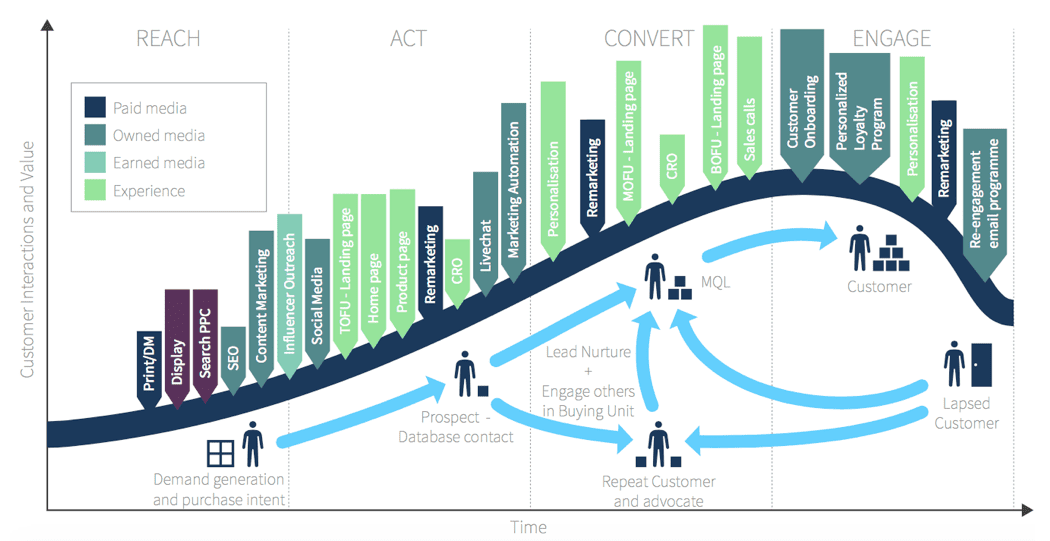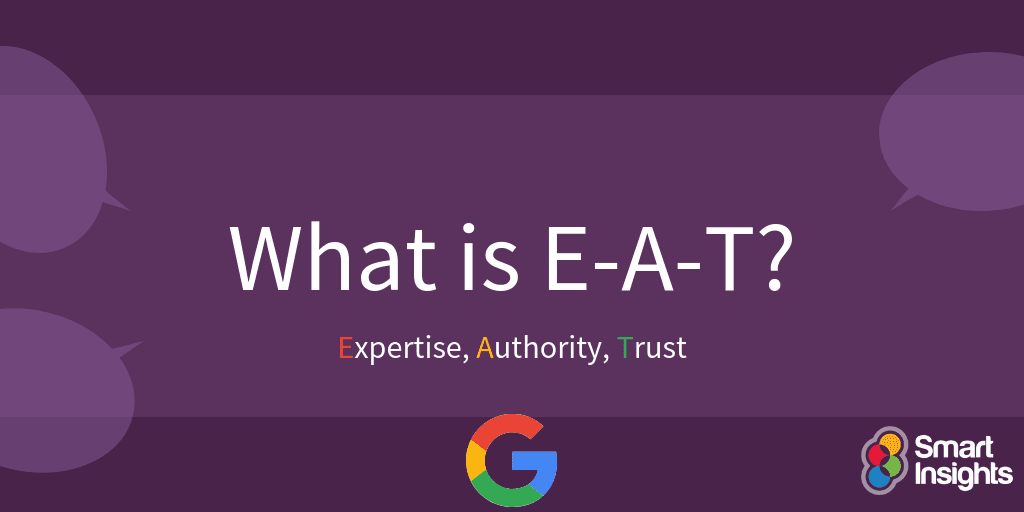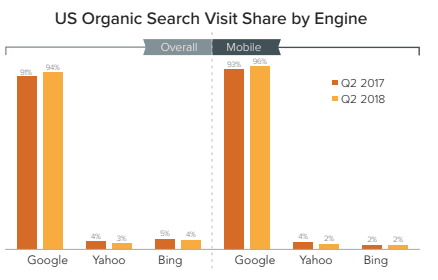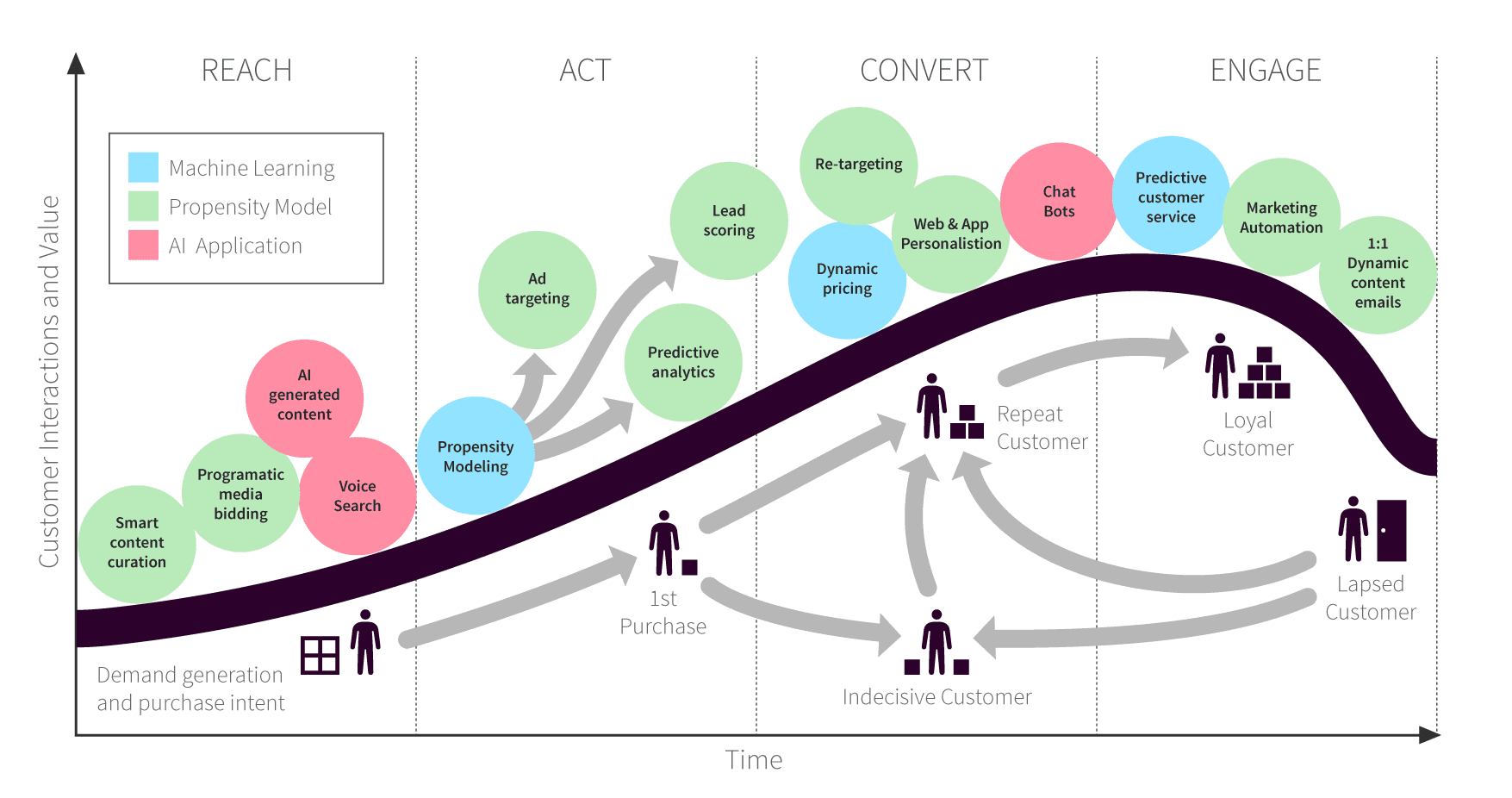Learn how to optimize your search marketing tactics to outrank your competition and win traffic and leads in 2019 by the SEM experts
How has 2018's Google search algorithm updates affected your business this year?
Did you know there's been nine confirmed Google updates (so far) this year? Three of these were 'core' updates and two specifically affected how mobile sites are indexed and presented to users through usability and design.
However, there has also been some interesting developments with Google paid search platforms, announced earlier this year at Google Live.
2018 Google algorithm updates (so far) include:
- "Brackets" core update - March 2018 - According to Danny Sullivan's Twitter page, @searchliaison, some sites may have seen drops or gains, stating: "There’s nothing wrong with pages that may now perform less well. Instead, it’s that changes to our systems are benefiting pages that were previously under-rewarded...."
- Zero-result SERP test - March 2018 - This was a mediocre update, which was quickly terminated after a week of testing. For date, time, and conversion calculations that only require one concrete answer, Google started displaying zero search results with a "see all results" and displayed the answer on a short knowledge card.
- Mobile-first index - March 2018 - Finally rolling out after months of build up and announcements on the importance of an optimal mobile experience, Google started migrating sites after a year and a half of testing.
- Unnamed core update - April 2018 - Confirmed by Google but not named, this improved certain site ranking or had little or no negative impact. They stated this type of core update happens several times a year.
- Snippet length drop - May 2018 - Earlier in the year, meta descriptions in SERPs had been increased to 300+ characters, allowing for a more descriptive sentence or two about the nature of the content. However, this has been reverted back to approximately 150-160 characters. Although it gave copywriters and SEOers more space to place with and potentially increase real-estate on SERPs, I fear it gave less experienced marketers a chance to "keyword stuff" instead of providing concise descriptions.
- Video carousels - June 2018 - Video in SERPs is taking an interesting direction. Video carousels have been rolled out on desktop after having been tested and featured on mobile SERPs and in knowledge panels over a year ago.
- Mobile speed update - July 2018 - Officially confirmed, Google now uses page speed as a ranking signal in mobile search ranking. This comes with the understanding mobile users are on the move, in a hurry and need answers quickly. This initially is set to just affect pages that deliver the slowest experiences to users and only affect a small percentage of queries.
- Chrome security warnings (full site) - July 2018 - This was no shock to marketers since Google has repeatedly stressed the importance of secure sites, with many warnings throughout the year that non-HTTPS sites would be penalized and warning messages would appear to users.
- "Medic" core update - August 2018 - Widely reported by Moz and confirmed by Google, their broad core algorithm update in August caused numerous fluctuations in ranking and traffic across many verticals. However, it seems those that were hit hardest by the update were in health and fitness.
Google's updates show that they're continually getting smarter with indexing and what they believe is quality content. However, looking over this year's confirmed updates shows a key pattern - speed and security are important. But before SEOers start looking for the newest innovations, optimizing their site to reflect the latest update the basic's need to be right as David Sayce, digital marketing consultant and director of Paper Gecko explains: 
"Google (and the other search engines) can only get smarter, the way they crawl, index, and display information. Gathering more information on search intent (or at least having a better understanding of the intent).
Quality will continue to be a factor with speed and security continuing to be key. Older websites that may not have been updated in some time will continue to suffer.
Personalization will continue to increase, as will the information delivered directly from search through featured snippets
Voice search will continue to be the next big thing. Whether 2019 is the year, only time will tell.
Mobile (non-desktop) and AMP will continue to increase, as users gather information on the go.
Predictions are difficult, and each year we see a couple of key points like voice or AI mentioned, as 2019 is the year these hit some form of critical mass.
I remember touting mobile as the next big thing for about eight years! My advice - get the basics sorted first."
How these updates affected site rankings and SERPs visibility is only a small priority - what businesses should instead be doing is planning ahead for the coming year and using the updates to their advantage. Since SERPs is always changing, there is no place for businesses to set one SEO strategy and have no agility to change it and optimize it with each and every update.
How important is mobile SEO?
There is a clear direction for brands to really start and take seriously mobile experiences, and how these are delivered to users that need quick and easy answers to their questions.

SEO expert, Dawn Anderson MSc DigM, Pg Dip DigM (IDM), Fellow IDM, Managing director, Move it Marketing, also agrees:
"2019 will be a year where tying in your SEO strategy harmoniously with other channels and strategies for both retention and acquisition will be crucial as we move further into the era of 'assistive search'. We are moving into a stage of ubiquitous computing so joining up the cross-device journey in SEO and tying this in with both blazing fast speed and seamless and frictionless UX as users seek to solve problems and complete intent-driven tasks will be our challenge into the future. Voice Search will continue to evolve and emerge as new formats such as 'speakable' and Google' Dialogflow bank of Google Actions question and answer knowledge grows, feeding into the possible responses for both Actions and Conversational Search. Finding ways to make this work for SEO will be the challenge commercially. Furthermore, meeting the back and forth app and mobile web consumer experience harmoniously with SEO will also present challenges possibly met through PWAs (or further enhancements on this which emerge). It's no surprise that Google's mobile search UI is becoming increasingly app-like. Our challenge is to make that step between our sites and apps seamless too."
What SEO and PPC techniques can we expect businesses to start adopting in 2019?
Download our Premium Resource – Successful SEO Guide
This guide is one of our most popular and rightly so. If you get it right, SEO can be a fantastic, relatively low-cost way to drive quality visitors who want to do business with you to your site.
Access the Successful SEO guide
Where does SEM fit into the B2B customer lifecycle?

Organic search and paid search techniques are used in the REACH stage of a customer lifecycle - content created should be answering initial search queries and whetting user's appetite for products or services.
Is voice search important?
The type of queries users ask is a great reflection of their stage of awareness of the problem they have. Content creators need to think about what type of content they are providing to users. Top of funnel content should educate and entertain users if they are still in the initial awareness stage, whereas the bottom of the funnel content should inspire and convince users of the quality of the product. Different types of queries include:
- Answer to a question/problem based
- The question itself/explicit and direct
- Description of the problem/symptom based or detailed
- Description of cause/symptom based
- Brand name or product parts/direct and educated
- Informational queries/awareness stage, or uninformed
Understanding the types of queries has never been more important as we continue to advance in smartphone use and new technology adoption. The popularity in voice search is continuing to rise with 35.6 million Americans using a voice-activated assistant device at least once a month in 2017, a year-on-year increase of 128.9%. This is directly connected to keyword researching conversational phrases in search engines because, as we already know, how users speak is different to how users type. Voice search is about getting reliable answers, fast - it's not about reading thousands of words about the topic but answering a question at the moment, when the user needs it immediately.
"The biggest trend in search and on the web in 2019 is likely to be voice search. Anyone with a smartphone is now only seconds away from performing a voice search, and then refining that search with another – increasing their user-intent and propensity to take action. With comScore predicting that by 2020 50% of all searches will be voice-led it’s clear this is a hugely growing market.
The most prolific users of voice in search are new parents (those who often struggle to have a spare hand) and baby boomers (who use the device as a ‘valet for daily life’ according to Google). In essence, those who use voice-assistant device, which these two categories of users mainly fall into, aren’t your typical early adopters – they aren’t your millennials who we may expect to see at the forefront of the charge, instead its your everyday user able to see the benefit and practical promise of voice" - Andy Kinsey, Head of Search at Smithfield Agency
What are the E-A-T Google quality signals?
Following the August 1st update, it's important more than ever to start creating content that follows E-A-T signals - shows expertise, is authoritative, and is trustworthy. Gaining commercial 'spammy' backlinks to increase DA and improve 'authority' is not the way.

Back in 2015, when Google first introduced E-A-T and YMYL (your money or your life) pages in their Search Quality Evaluator Guidelines, all eyes were on creating content that was high in authority, gave trustworthy advice and given from experts in the field.
However, over the last year, I've seen too many sites producing content "for the sake of producing content", outreaching for backlinks to that content and believing that a 600-word article that is 400 words of fluff is good enough to engage readers, give them detailed answers to their questions, and believe Google will rank it high in SERPs. Over the year, I would say some sites have become lazy in their content.
I personally use this model when accepting writers and articles on our blog. Giving correct information that will help users and provide useful actionable advice is at the core of what we do at Smart Insights.
Search is no longer just Google, Bing and Yahoo
"Google it". A key phrase from people who don't know the answer to a question. Our go-to place for getting an answer is Google (and other search engines) as they'll always have the answer is a site has provided the content. What people tend to forget is that Google does not know the answer, Google shows the answer it thinks is the most relevant to what the user has asked, based on content from other sites. It directs you to where you need to be, but what about other sites that offer a search functionality?
Head of Marketing at Ahrefs, Tim Soulo, sums this up perfectly:
"The year 2019 is the perfect time to realize that 'search presence' doesn't imply Google alone. You should start expanding your efforts towards every big platform that have search functionality.
- Can people find you on YouTube?
- Can they find you on SlideShare?
- What about Apple App Store or Google Play Store?
- What about eBay and Amazon?
- What will they hear when they ask questions to Alexa, Google Assistant and Siri?
- What about Facebook, Twitter, and Instagram? Those platforms have search functionality too.
For a very long time, Google used to be the only gateway to whatever you wanted to do online, so people used to start browsing the web exclusively from Google homepage.
Not so much today, though. Depending on what you want to do, you're going to pick an appropriate "entry point" (see my list above). And if your business cannot be found there - you're seriously missing out."
However, that's not to say Google is a dying engine - far from it. It's still the most used search engine on desktop and mobile, holding the largest market share.

Paid search advertising is becoming easier to manage for enterprise and SMEs
Sridhar Ramaswamy, Senior Vice President for Ads at Google, announced some interesting developments, along with colleagues, earlier this year for Google's paid advertising platform at their Google Marketing Live event.
Amongst their latest developments included:
- Responsive search ads - flexible ads that simplify the ad creation and testing process, powered by machine learning. it mixes and matches multiple headlines and descriptions together to provide the best ads to customers.
- Landing page speed score - this score column can be found in the "landing pages" page in Google ads and tests mobile speed score.
- Cross-device reporting and remarketing in Google Analytics - combines data from users that use your site across different devices.
- Smart campaigns - designed to help and optimize SMEs that want to advertise online with either little budget, time or knowledge of the full ads platform.
With these new developments, local businesses are sure to benefit in 2019. As I reported earlier in the year:
"Google search already has features that allow users to search 'near me' and have risen dramatically on mobile (as explained previously). Local campaign goals, however, are to drive traffic to stores from ads - yet aren't specifically designed for SMEs. This feature will be available to all within the next few months. But how does this work?
This campaign will report on aggregated data from signed-in Google users who have opted to turn location history on! This is a great way to attribute online marketing advertising with offline visits to better understand what ads drove in-store footfall. Although this technology has been available previously to the biggest brick-and-mortar stores, it made increasingly accessible to all."
Local ad campaigns will, inevitably, become smarter.
Are expanded text ads taking over SERPs?
Recently launched this year are expanded search ads, and this has left many wondering about the importance of paid search over organic search results. Businesses that invest in PPC and get their SEO right have a much higher chance at reaching potential customers and leads through search engines - the more results you show for a specific keyword the higher the potential click-through.
Matt Janaway, CEO of Marketing Labs, explains how this will affect 2019 paid search strategy:
"In August 2018, Google officially launched “Expanded Text Ads” otherwise known as “Extended Extended Ads” across both their Google Search Network and Google Display Networks. This recent change has prompted new discussions about the weight Google (Alphabet Inc) are shifting towards paid advertising prominence in search and machine learning advertising algorithms in favour of organic SEO results - the latest Google statistics highlight a23.9% increase in advertising revenue in Q2 2018 alone, with quarterly revenue reaching $28.087 billion!
That said, this recent major text display change gives Google Ad users more room to convey their message in Google search results to potential customers. The new display format gives Ad managers the ability to break free from the current tightly worded ad set-up by offering the chance to write much more advert copy in a bid to increase exposure.
This major change will greatly affect position 1 and 2 of Google advert results and Ad managers should try to invest time creating 'Expanded Text Ads' now, prior to competitors beating them to it for increased exposure. For ‘branded’ adverts, this display change should, in theory, help to close down competitors targeting your brand keywords as your advert should have dominance. Across your account, this change will allow for more business USPs to be displayed as well as greater general control over advert messages, which in turn should lead to better performing campaigns.
However, although 'Extended Extended Ads' offer new opportunities, they make A/B testing of adverts extremely difficult. This is because testing becomes A/B/C testing (which is 6 variations) plus you have 2 description variants also. In short, this new ad format may be forcing users who choose this option to hand over advert control to Google's 'machine learning' to decide on the most applicable advert for the search term which also has many pros and cons. Ad managers need to also remember that bigger adverts may not necessarily perform better than the previous format. Users may be able to distinguish paid ads more clearly, therefore bypassing your advert altogether to reach organic SEO results."
How will machine learning affect paid search advertising?
One of the trends I see year after year across a few marketing channels is the use of machine learning and how this will improve the customer experience. To help visualize how AI and machine learning can be applied across the customer lifecycle, Smart Insights has created its RACE machine learning diagram.

Byron Tassoni-Resch, SEM Manager at Deliveroo and Founder at the comparison website for digital marketing tools and platforms GrowthSupermarket, states including machine learning into your PPC bidding strategy is the next trend in paid search. 
"It's no secret that Google wants advertisers to move towards using their automated bidding strategies in campaigns, but they are now increasing the number of data touch points those bidding strategies use. Which is great news because they are getting better and better.
Cross-device and cross-platform attribution will be included which essentially means there will be a deeper and richer data-set for advertisers to use in their automated bidding strategies. In particular, I think smaller advertisers will really benefit from these automated strategies because they will finally have the access to high-quality data through Google.
That said, with any kind of change to your campaigns, I recommend you test it first before rolling it out to your entire account. Then, once you have implemented an automated bidding strategy, make sure that you give it enough time to gather data before you start making changes to your input variables! If you do however want to make some changes, don't increase your variables by more than 10%-15% (either up or down) because if you do, the algorithm will have to start from the beginning again and it's likely your performance will suffer in the short term."
We're interested to see what is going to be included in your SEM strategy for 2019 - give us a tweet to discuss new innovations you want to share.
If you want a full overview of all channel trends, Dr. Dave Chaffey's post, 8 business-critical digital marketing trends for 2019, is a great place to start!

















